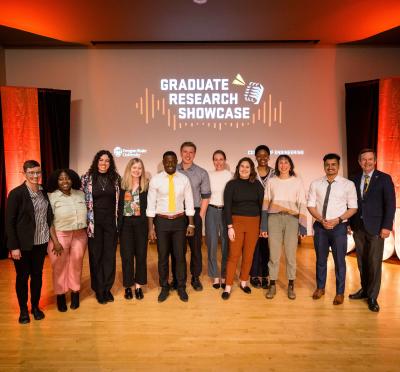Barbara Simpson, assistant professor of structural engineering, has received a Faculty Early Career Development, or CAREER, award from the National Science Foundation. The award includes a grant of nearly $600,000 over five years.
Simpson proposes to lay the algorithmic foundations for high-fidelity simulations of complex structural systems using graphics processing units, or GPUs. Her research could significantly advance the fundamental understanding of the risks posed by natural hazards to the built environment. For example, soil-structure interaction is critically important for how tall buildings respond to earthquakes, but the variable is often neglected in building design because of high computational costs and physical testing constraints.
“We intend to harness the massive parallelism of GPUs to overcome computational bottlenecks in structural simulations, specifically real-time hybrid simulations,” Simpson said.
In hybrid simulations — a powerful tool for analyzing structural systems — physical tests are combined with numerical models. They’re typically applied to systems that are too large or complex to undergo conventional physical testing alone.
“We can already do some hybrid simulations in real time,” Simpson said, “but for very complicated problems, like soil-structure interaction, it’s just not feasible from a computational standpoint. If your numerical model is slow, it’s difficult to couple experimental and numerical components in real time.”
That’s where GPUs come in. As their name suggests, GPUs were originally designed for graphics rendering. But their ability to simultaneously execute numerous discrete calculations has proven valuable for a growing number of applications, including high-speed simulations.
Simpson will be using GPUs in Oregon State’s NVIDIA DGX-2 computing cluster, as well as GPUs in the Texas Advanced Computing Center at the University of Texas at Austin.
“By leveraging the computational power of GPUs,” Simpson said, “I want to reduce computational times from hours down to minutes and seconds and use this technology to support real-time hybrid models of very complex structural problems.”



